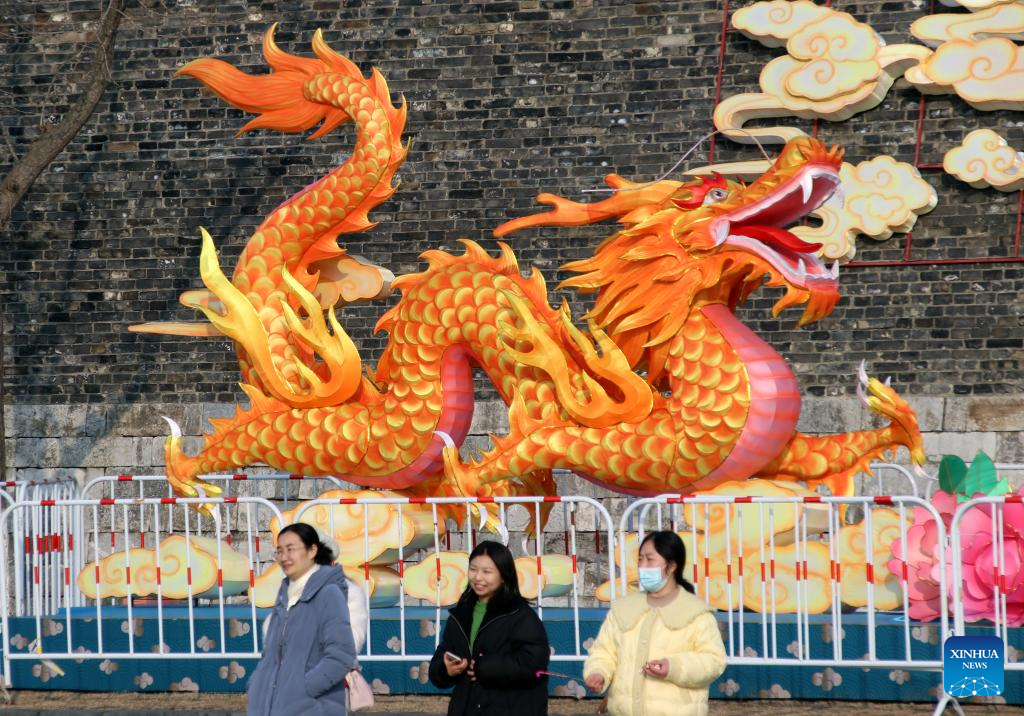
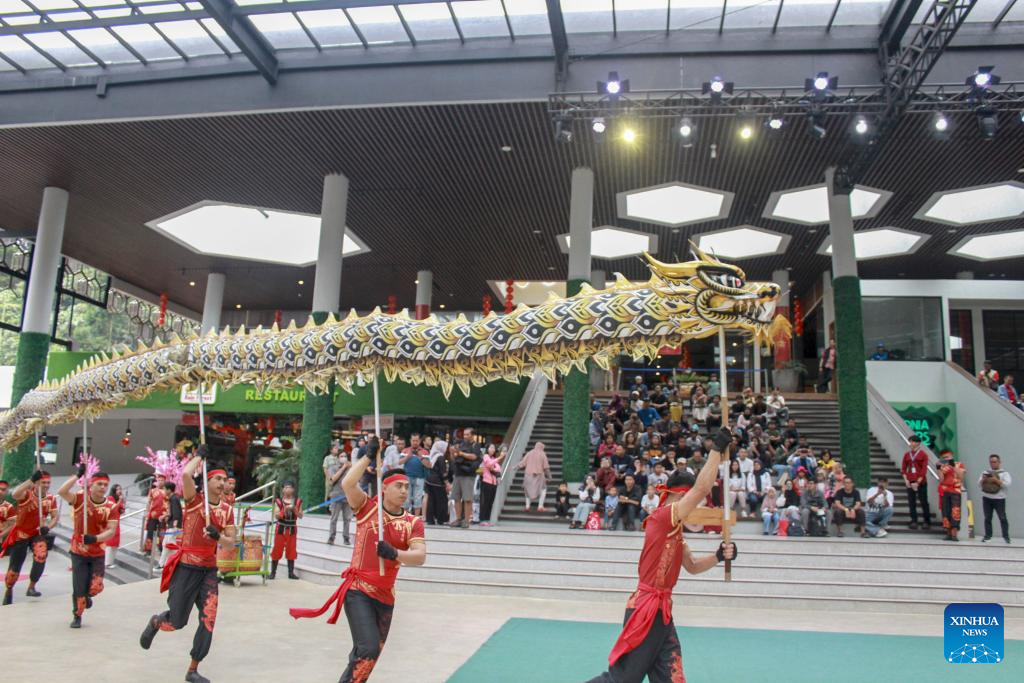

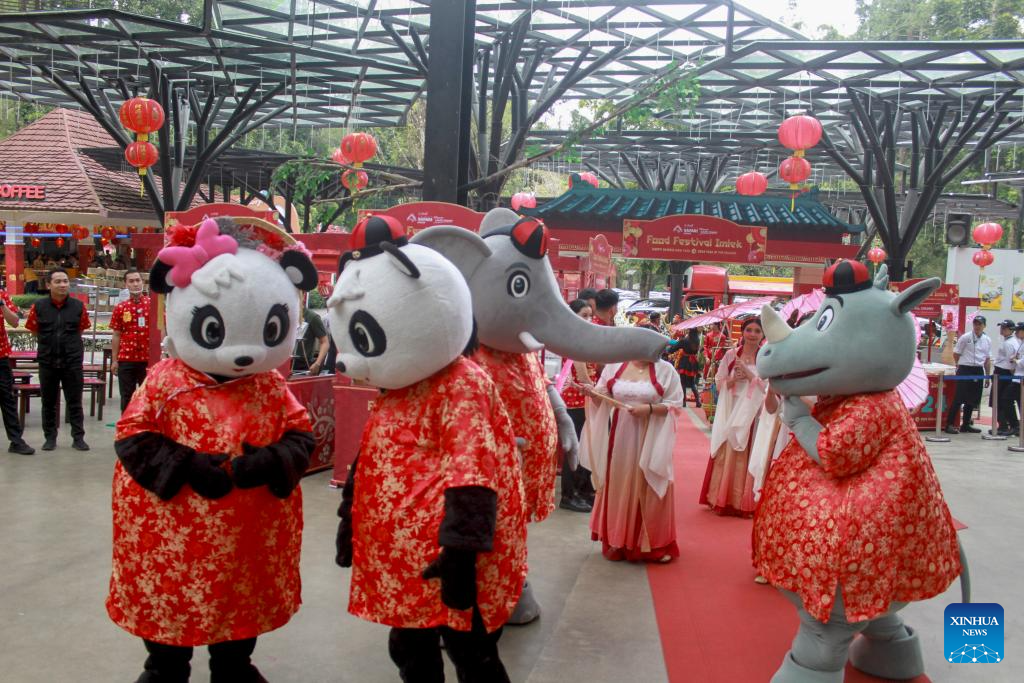

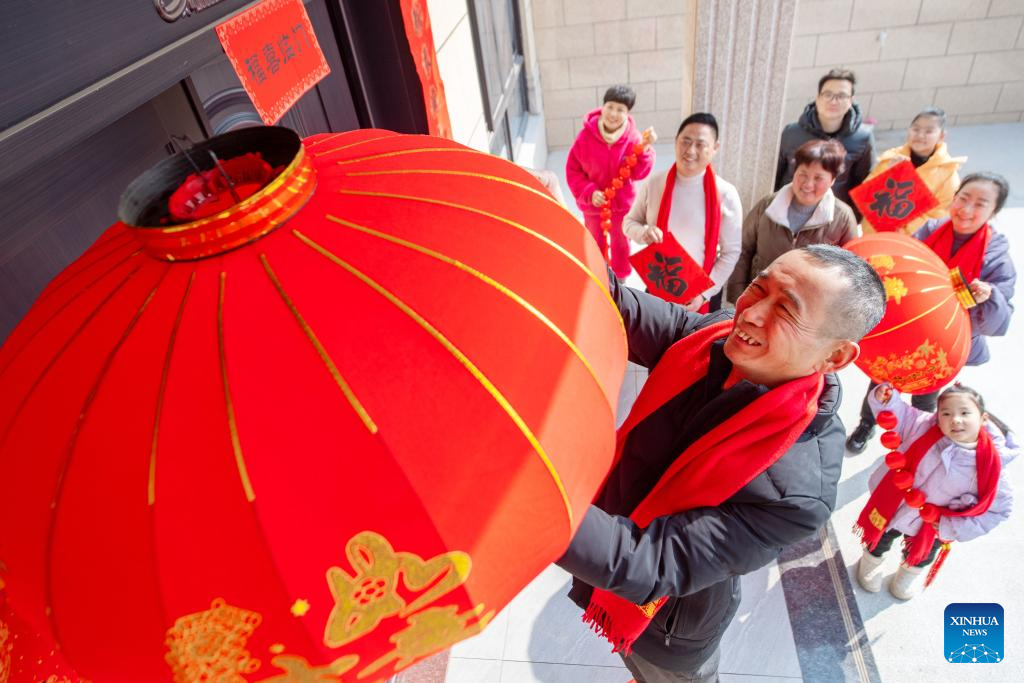
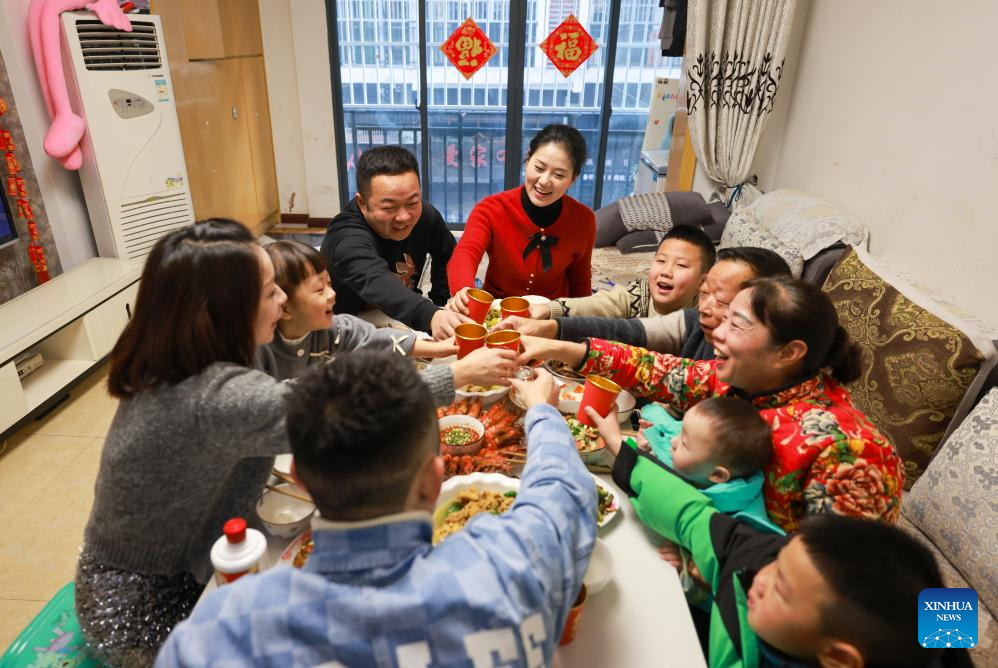
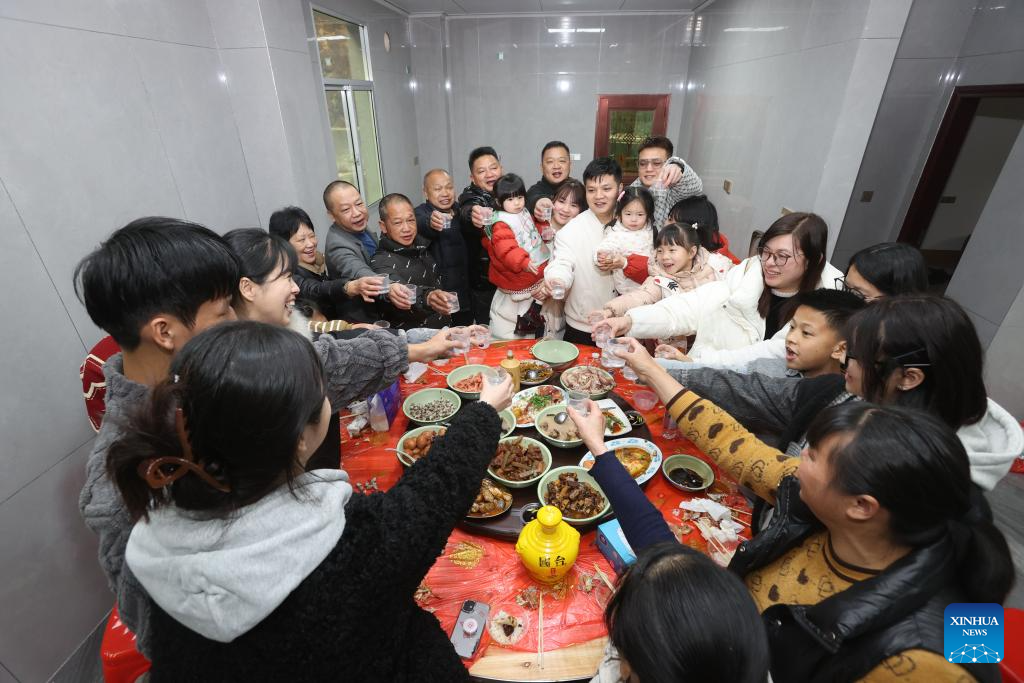
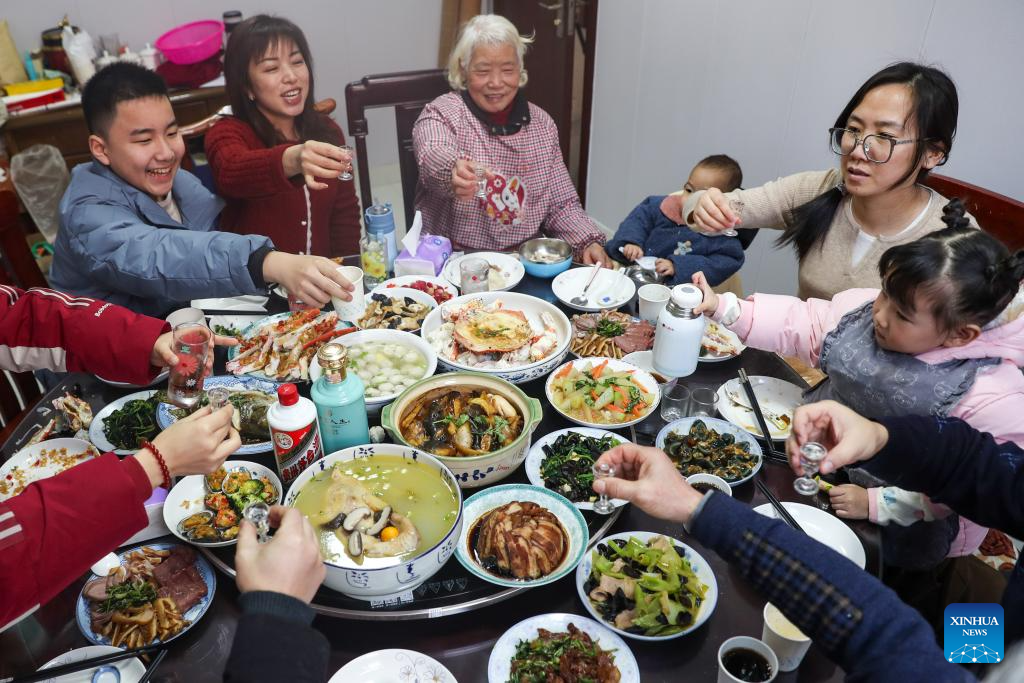
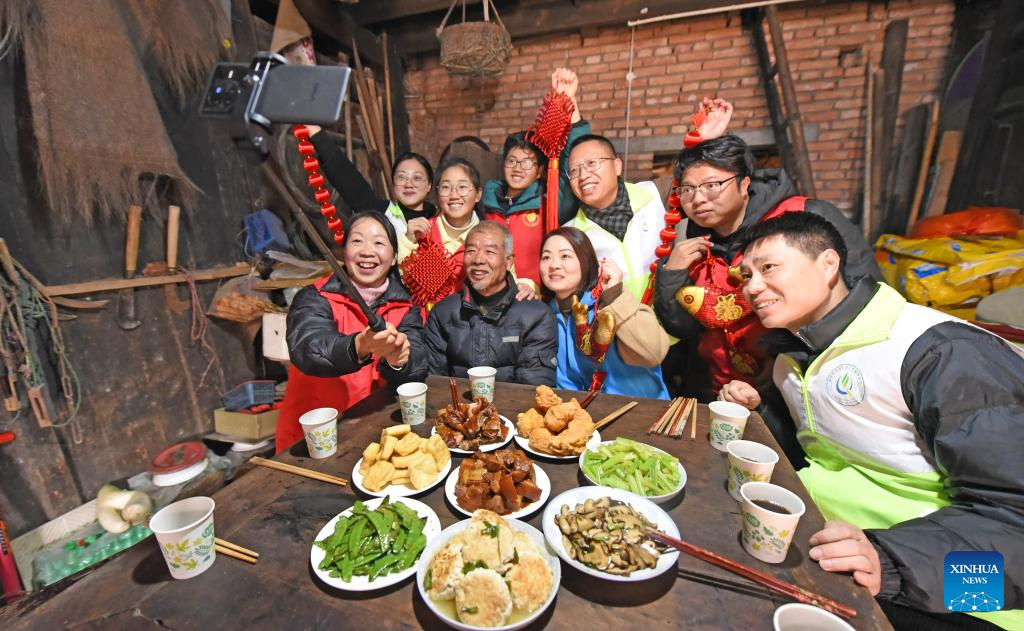
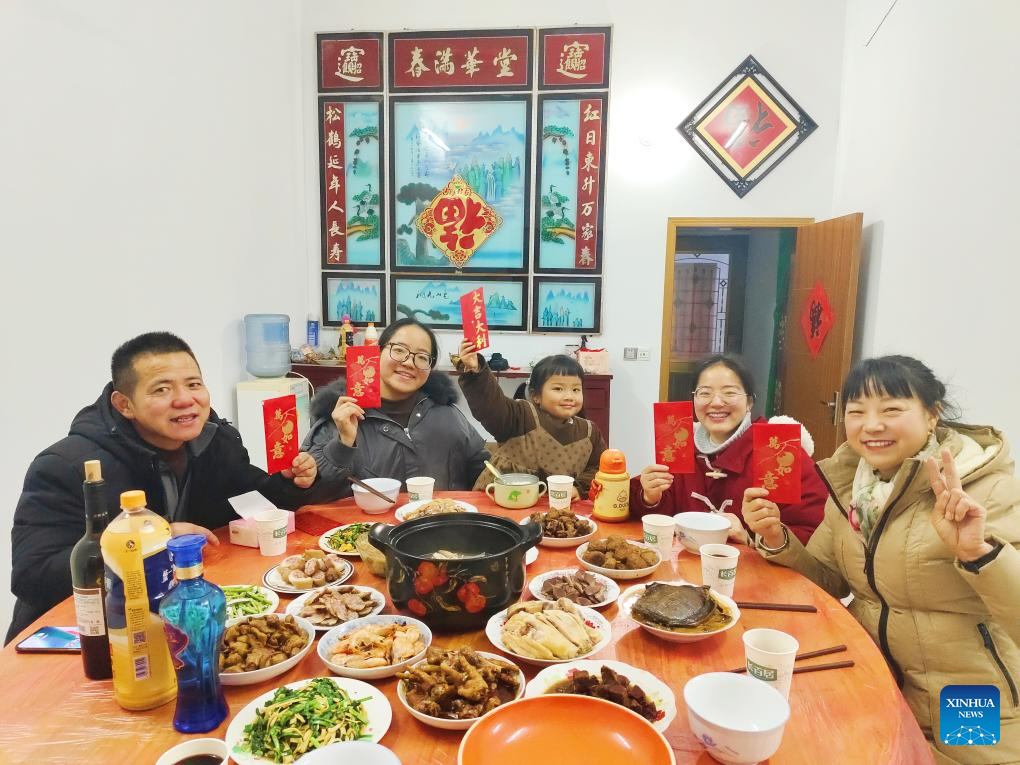
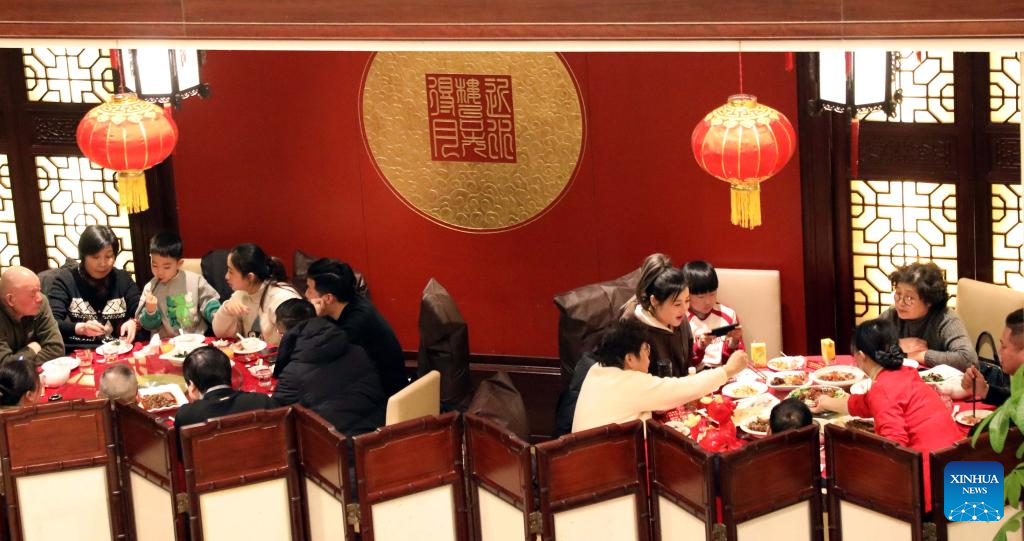
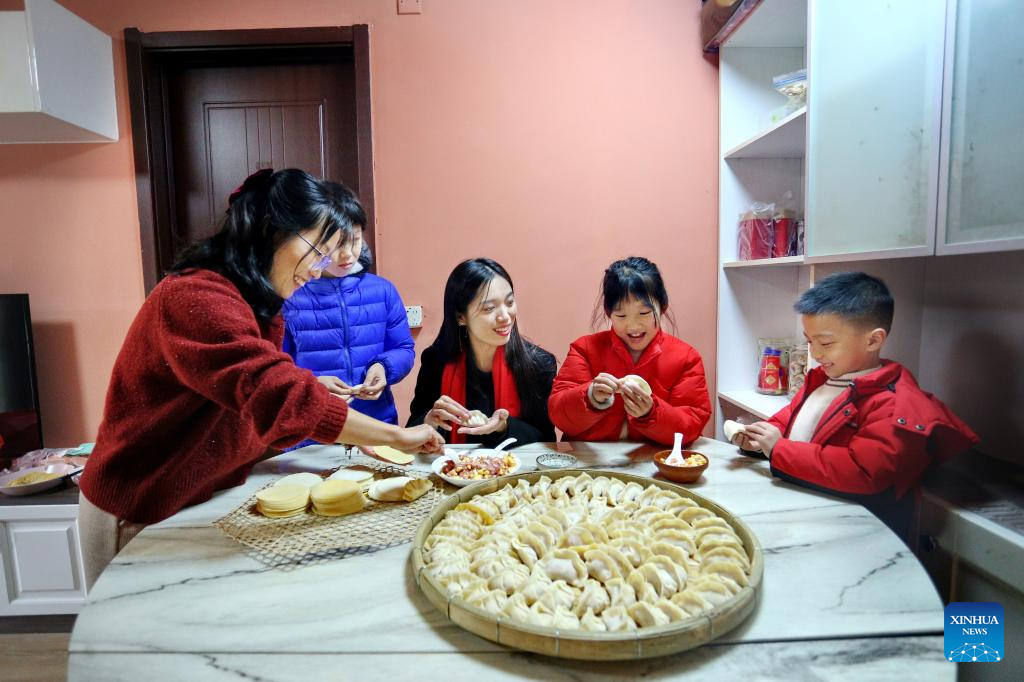
(Source: Xinhuanet)













(Source: Xinhuanet)
Mit dem Näherrücken des chinesischen Jahres des Drachen bringen viele Eltern aus Changchun (Provinz Jilin) derzeit ihre Kinder zum Haareschneiden. Die Friseure haben speziell für die Kinder verschiedene unterhaltsame Frisuren zum Neujahr entworfen.




(Quelle: CRI Deutsch, VCG)
Am 02.02.2024 hat in Brüssel das dritte Indo-Pazifische Ministerforum der EU stattgefunden.
Es ist erwähnenswert, dass das Forum China und die Vereinigten Staaten nicht zur Teilnahme eingeladen hat. China selbst ist ein wichtiges Land in der indo-pazifischen Region. Einerseits behauptet die EU, dass sie bereit ist, die Zusammenarbeit mit China aufrechtzuerhalten, andererseits ist sie China gegenüber misstrauisch, was ihre widersprüchliche Mentalität widerspiegelt.
Der Sprecher des chinesischen Außenministeriums, Wang Wenbin, sagte, China sei ein vertrauenswürdiger und unverzichtbarer Partner der EU, sowohl bei der Lösung der offenen Probleme Europas als auch bei der wirksamen Bewältigung globaler Herausforderungen.
(Quelle: CRI Deutsch)
Eine Vielzahl von chinesischen Filmen wird sich während des bevorstehenden Frühlingsfestes einem spannenden Wettbewerb unterziehen und den Kinobesuchern ein Kinofest mit vielfältiger Auswahl bieten.
Insgesamt neun einheimische Filme werden während der acht Feiertage zum Frühlingsfest – vom 10. Februar bis 17. Februar – landesweit auf die Leinwand kommen. Acht davon werden sogar am gleichen Tag, am ersten Tag des Jahrs des Drachen, ihre Premiere feiern.

Da die diesjährigen Feiertage zum Frühlingsfest einen Tag länger sind als in den Vorjahren, gehen Branchenkenner davon aus, dass dies eine Chance für größere Erfolge der neun Filme an den Kinokassen bedeutet.
Von den neun Produktionen hat die Komödie „Pegasus 2“ bisher die meisten „Wanna Watch“-Stimmen auf der Filmdatenplattform Maoyan erhalten. Die Produktion des Drehbuchautors und Rennfahrers Han Han ist eine Fortsetzung des Kinohits „Pegasus“ aus dem Jahr 2019, die die Geschichte von Zhang Chi fortsetzt, einem Rennfahrer, der allen Widrigkeiten trotzt, um seinen Traum zu verwirklichen.
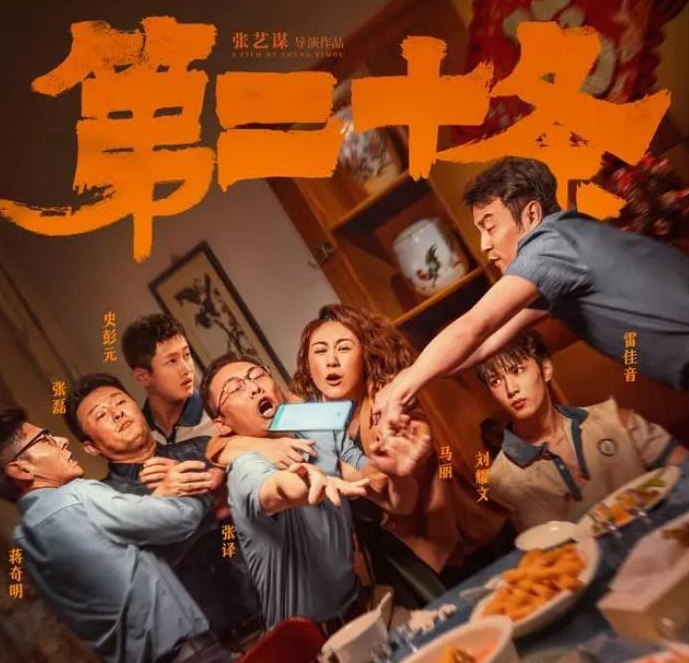
„Artikel 20“, ein mit Spannung erwartetes Werk des renommierten chinesischen Regisseurs Zhang Yimou, rückt den 20. Artikel des chinesischen Strafrechts über gerechtfertigte Verteidigung ins Rampenlicht. Der Film bietet eine All-Star-Besetzung, die sich aus den beliebtesten Schauspielern der letzten Jahre zusammensetzt.
Eine weitere viel erwartete Produktion ist der Film „Yolo“, die Abkürzung von „you only live once“, „Du lebst nur einmal“, bei der die Komödien-Schauspielerin Jia Ling die Regie führte und die Hauptrolle spielt. Er handelt von der inspirierenden Geschichte einer übergewichtigen Frau, die durch Boxen einen neuen Ausgangspunkt für ihr Leben findet. Jia Ling soll während der Dreharbeiten 50 Kilogramm abgenommen haben, was die Neugier und Aufmerksamkeit vieler Kinobesucher geweckt hat.

Für Kinder stehen drei Animationsfilme zur Auswahl. „Boonie Bears: Time Twist“, der zehnte Teil der „Boonie Bears“-Reihe, führt dabei die „Wanna Watch“-Liste an.
Der Action-Thriller „Break War“ ist der einzige der neun Filme, der erst ab dem siebten Feiertag gezeigt wird. Das Werk des Hongkonger Regisseurs Danny Pang zeigt den spannenden Kampf zwischen einer Terrororganisation und der Hongkonger Polizei.
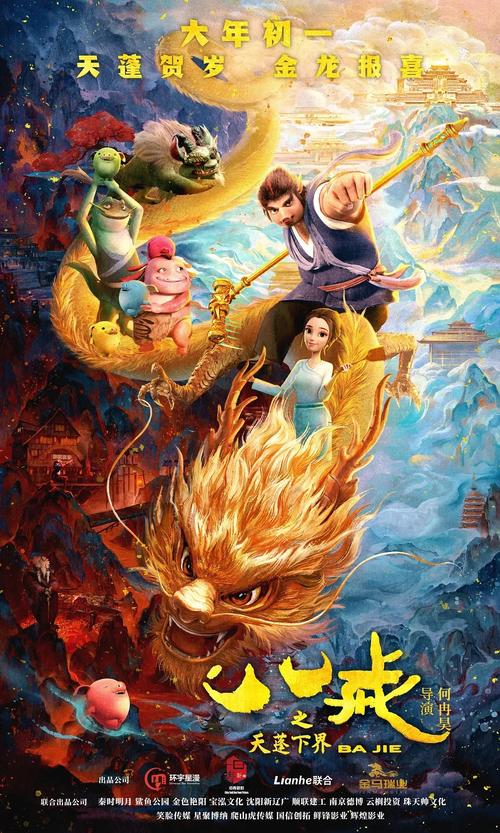
Die Feiertage zum Frühlingsfest sind in der Regel eine entscheidende und lukrative Periode für die chinesische Filmindustrie. Die Einnahmen an den Kinokassen während des vergangenen Frühlingsfestes Anfang 2023 machten einem Bericht von Maoyan zufolge etwa 12,3 Prozent der gesamten Jahreseinnahmen aus.
Branchenanalyst Chen Jin erklärt: „Der Erfolg an den Kinokassen während der bevorstehenden Feiertage wird für die anhaltende und gesunde Wachstumsdynamik des Filmmarktes im Jahr 2024 entscheidend sein.“
(Quelle: CRI Deutsch)
Laternenfeste zum traditionellen Frühlingsfest werden landesweit in China veranstaltet, um das Neujahr zu feiern. Laternen mit Drachen-Motiven sind immer eine Attraktion.
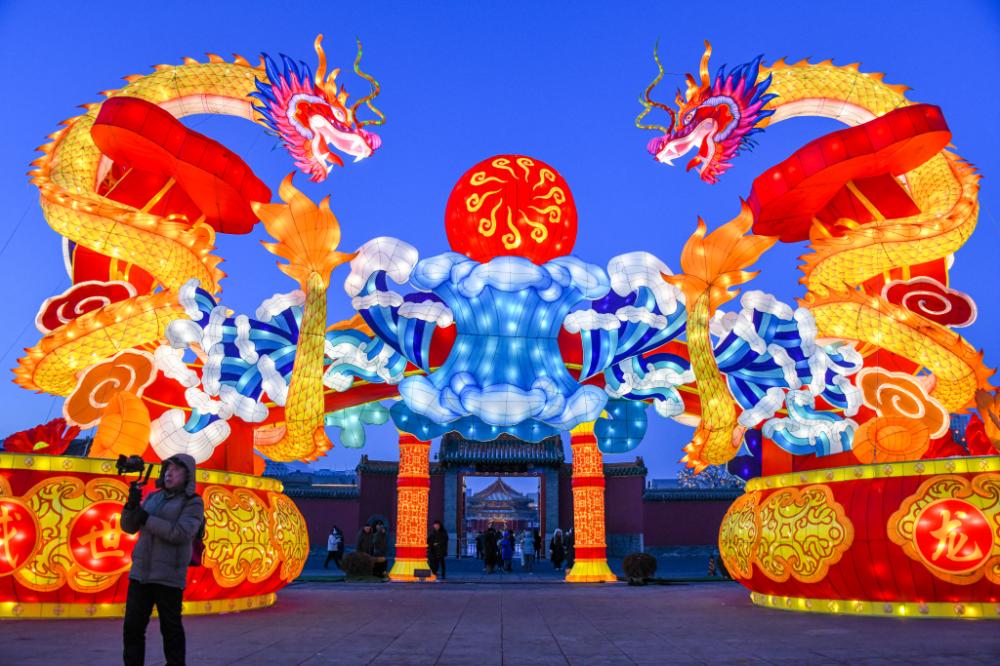
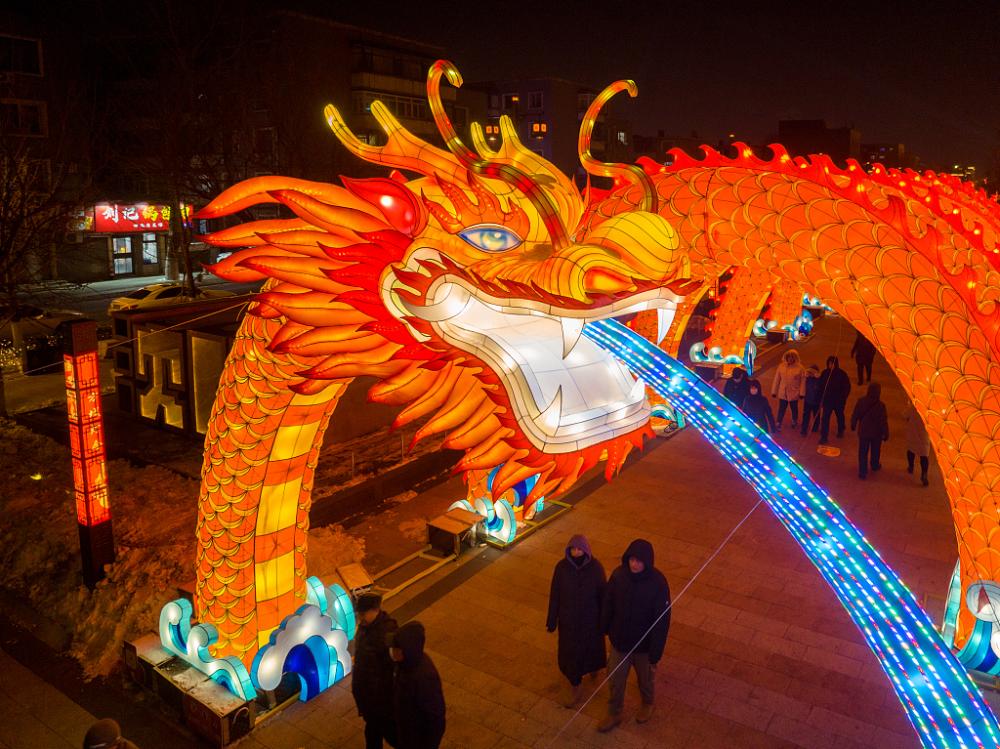
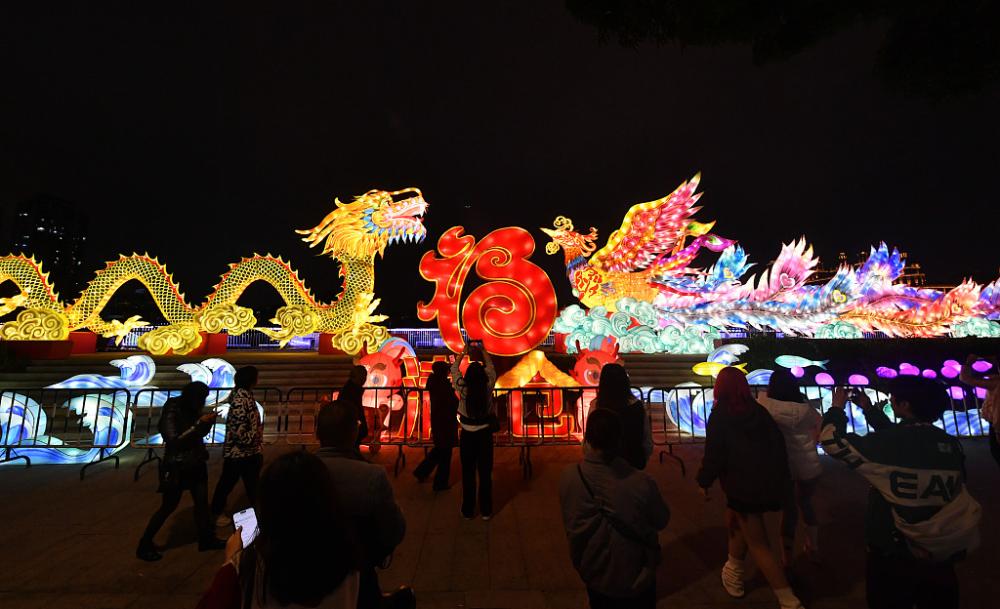
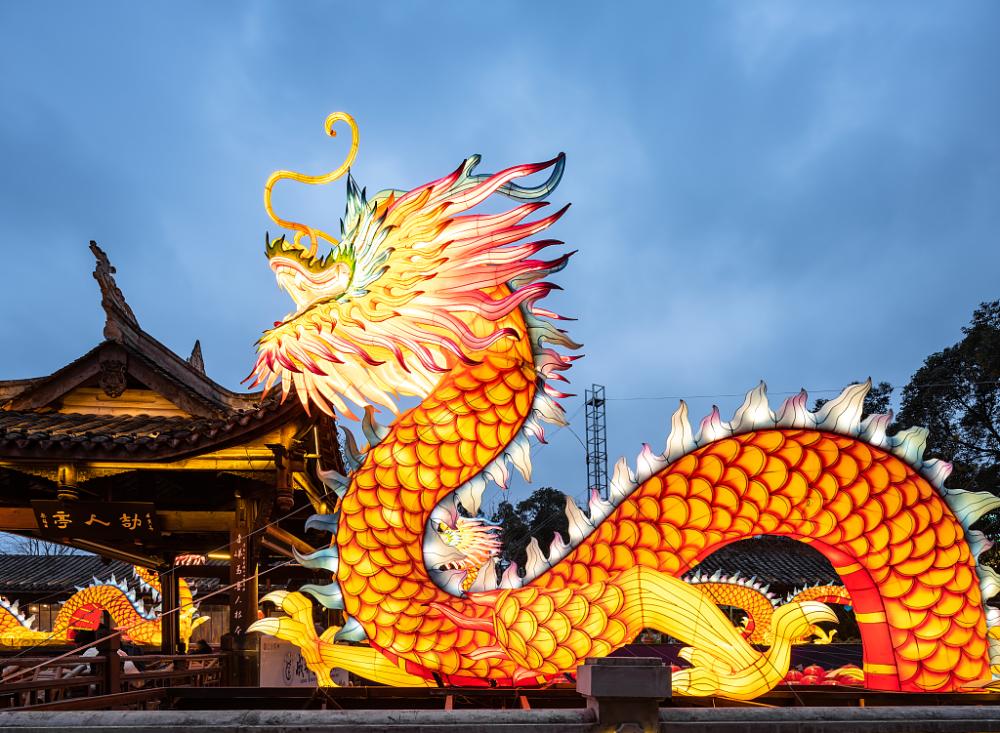
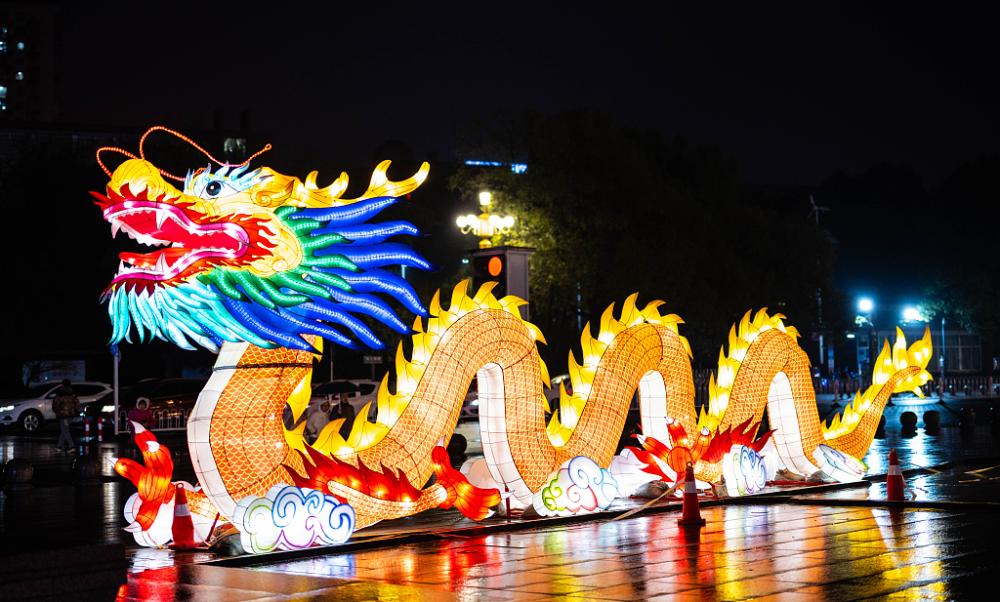
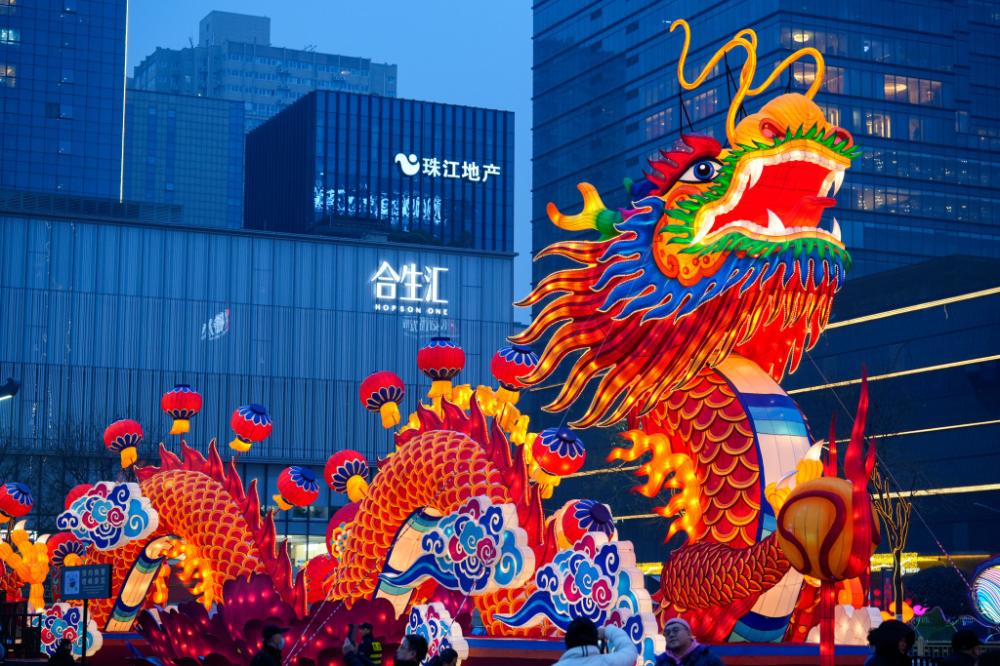
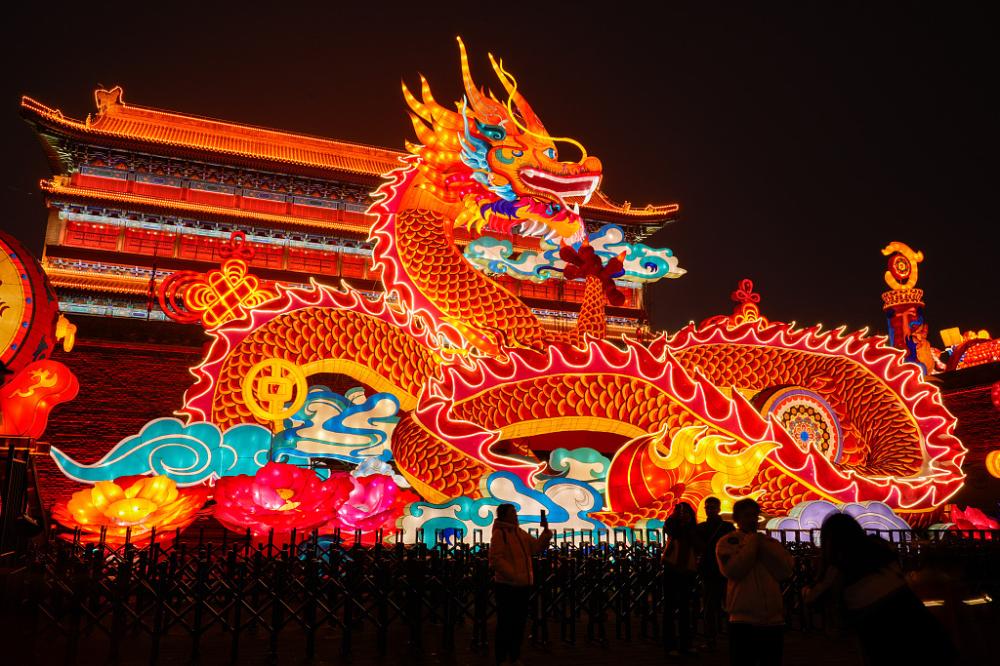
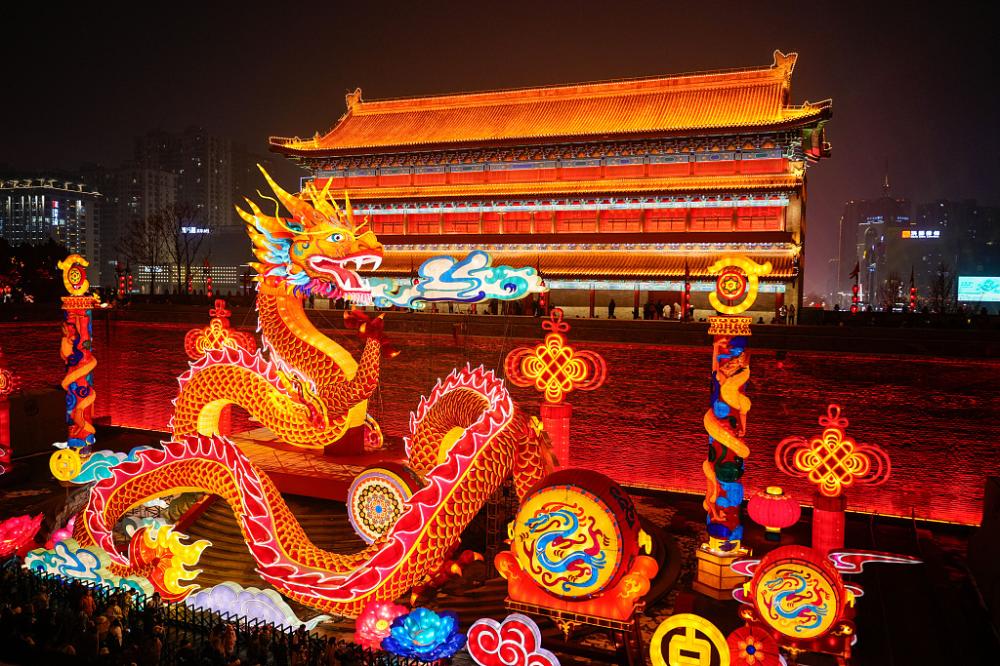
(Quelle: CRI Deutsch, VCG)
Verschiedene ethnische Minderheiten in Liuzhou im Autonomen Gebiet Guangxi der Zhuang-Nationalität feiern mit Tanz, Gesang und traditionellem Essen das traditionelle chinesische Neujahrsfest.
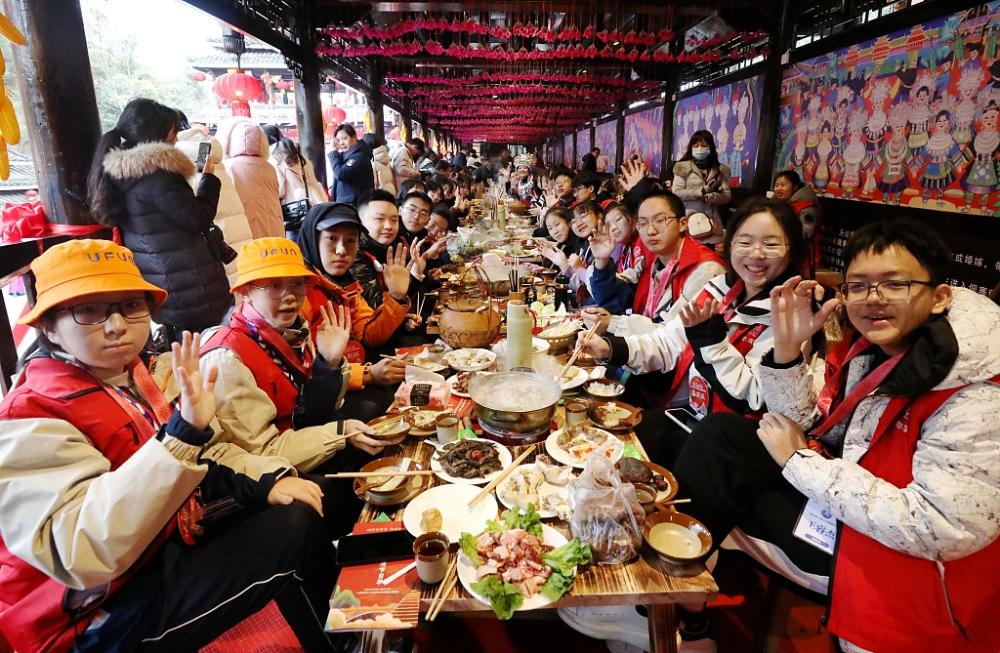
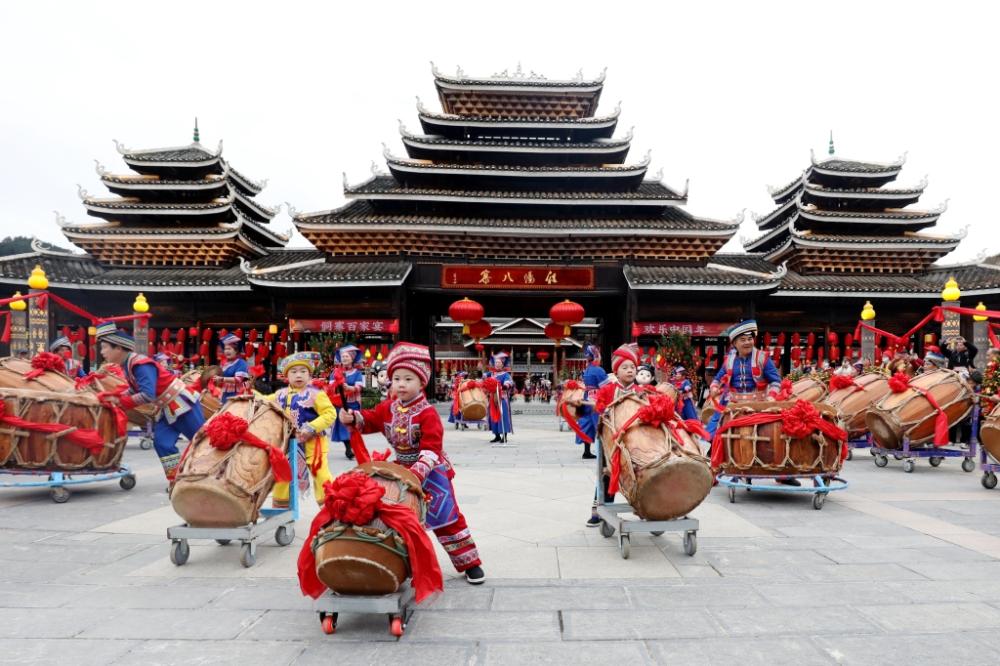
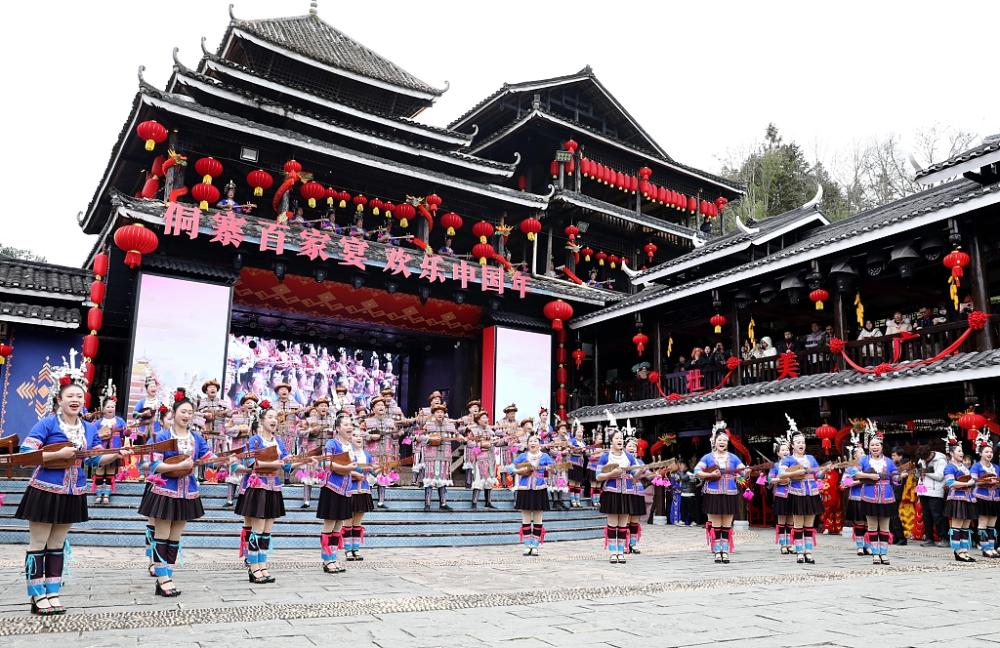
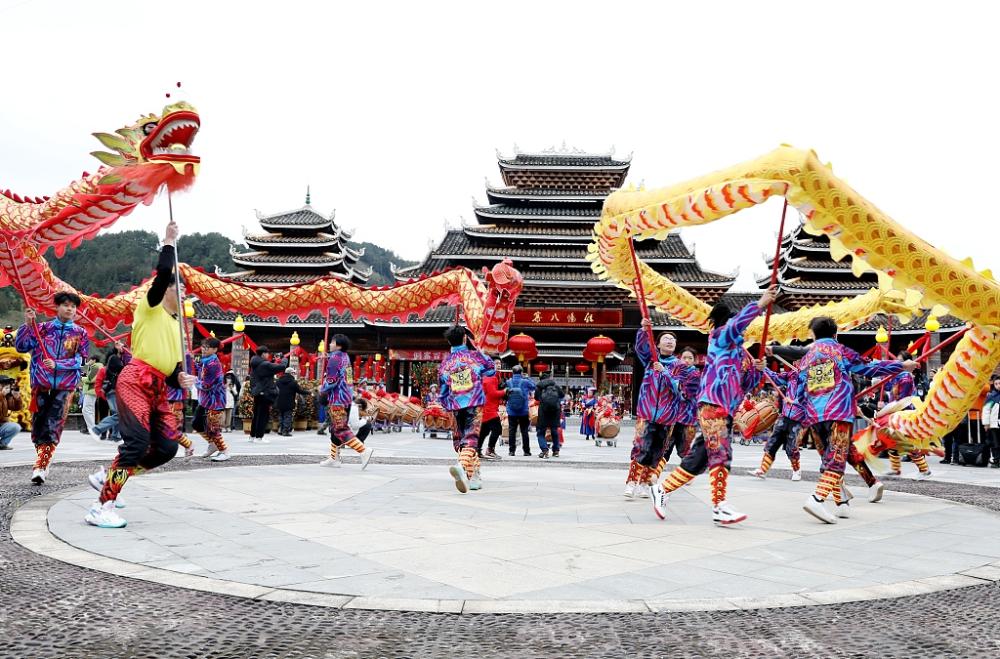
(Quelle: CRI Deutsch, VCG)
Da das traditionelle chinesische Frühlingsfest näher rückt, gehen die Menschen in verschiedenen Teilen Chinas auf die Neujahrsmärkte, um Dekorationen und Lebensmittel für das Neujahr einzukaufen.
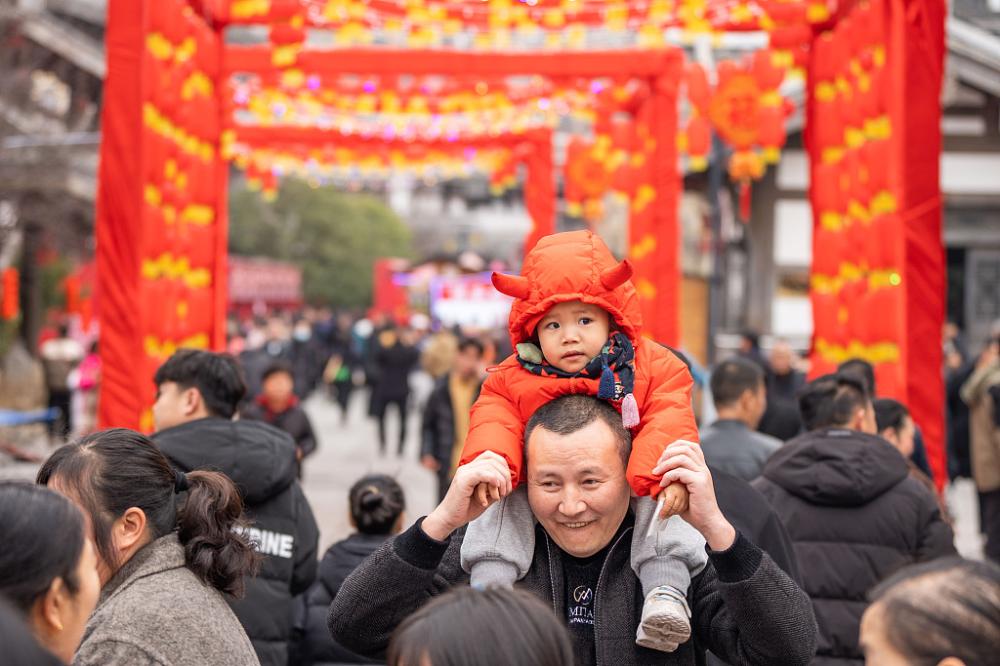
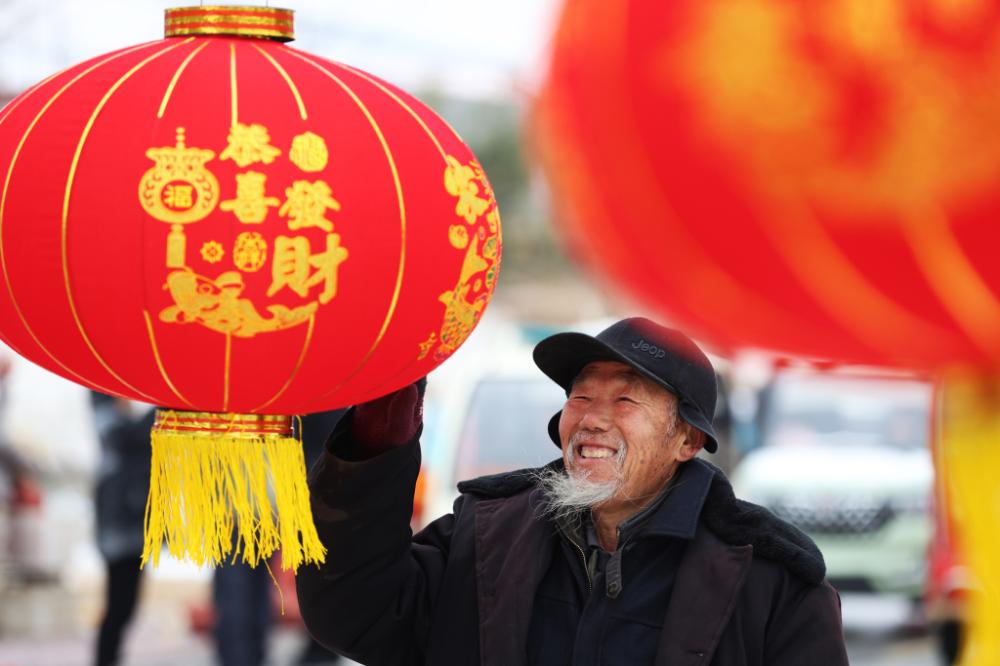
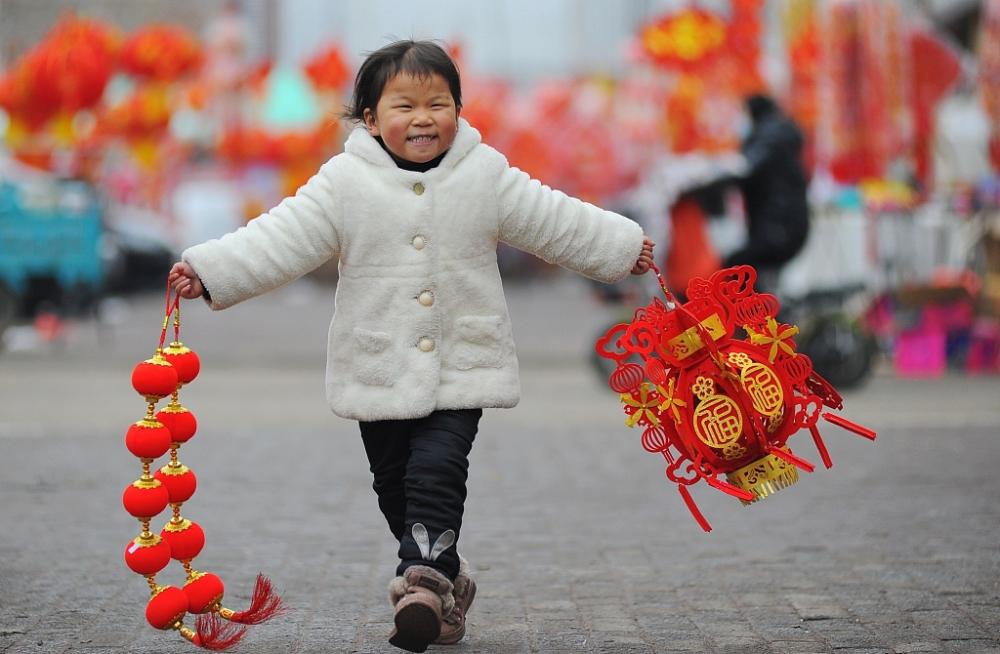

(Quelle: CRI Deutsch, VCG)
Trotz starken Schneefalls besuchen viele Touristen die bekannten Longmen-Grotten in Luoyang in der Provinz Henan.





(Quelle: CRI Deutsch, VCG)
In China haben Züge, die langsamer als Hochgeschwindigkeitszüge fahren, grüne Außenwände und werden mit Strom- oder Dieselmotoren angetrieben. Die grünen Züge galten in den 1950er- bis 1990er-Jahren als ein wichtiges Verkehrsmittel in China.
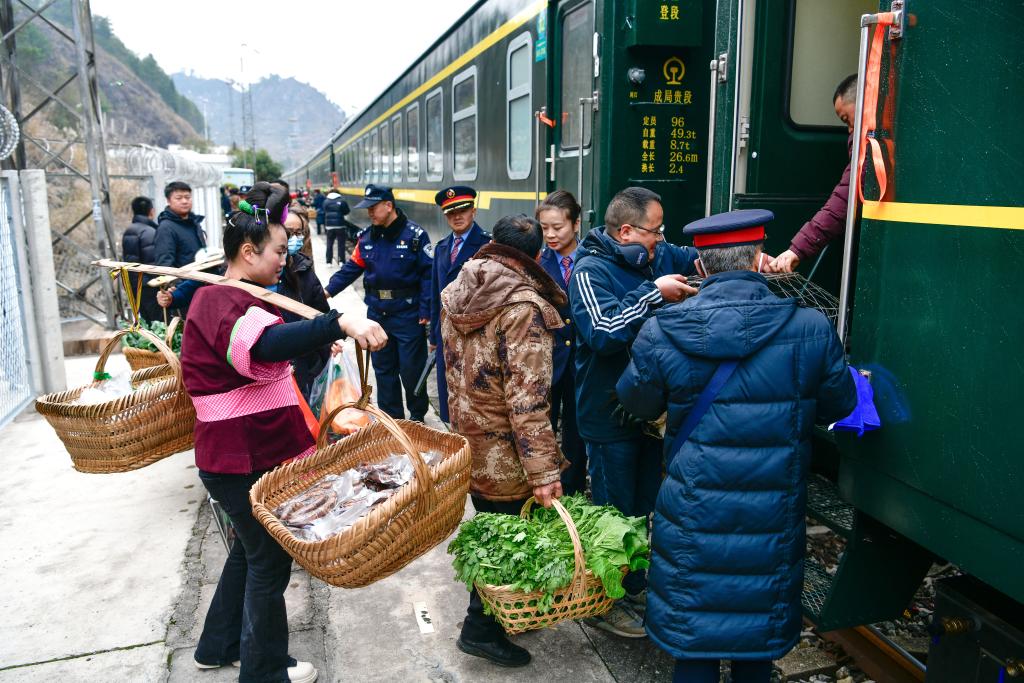
Die Züge 5633 und 5634 wurden im Jahr 1997 in Betrieb genommen und pendeln seit mehr als zwei Jahrzehnten zwischen Guiyang und Yuping in der bergigen Provinz Guizhou in Südwestchina.

Die Fahrgäste dieser Züge sind häufig ländliche Bewohner, die ihre Agrarprodukte außerhalb des Berges verkaufen, Alltagsgebrauchsartikel einkaufen, Ärzte aufsuchen und Verwandte besuchen wollen. Für sie sind solche langsamen Züge die kostengünstigste und zuverlässigste Art zu reisen.

Da die Bewohner entlang dieser Zug-Linie sehr verstreut leben, steigt an manchen Haltestellen nur ein Fahrgast oder gar kein Passagier ein. Die Züge halten dennoch an jedem Bahnhof und warten ein paar Minuten lang. Der niedrigste Fahrpreis beträgt nur einen Yuan RMB, umgerechnet 15 Cent.
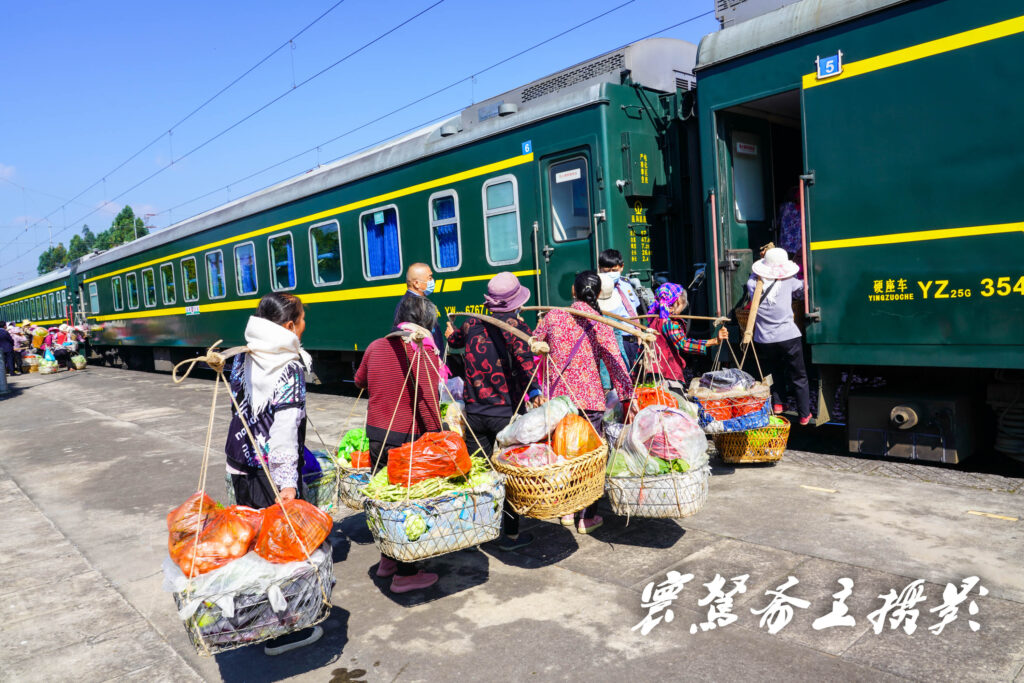
Im Vorfeld des Frühlingsfestes sind die Züge 5633 und 5634 mit Scherenschnitten und Lampions in leuchtendroter Farbe geschmückt. An der Bahnstation „Liu Ge Ji“ stieg der 38-jährige Gemüsehändler Wu Moubiao in den Zug ein und ging in den Wagen Nummer sechs, ein Zugabteil extra für Gemüsebauer. Er hatte 50 Kilogramm Erdbeeren mitgebracht. Das süße Aroma der Erdbeeren zog sofort viele Passagiere an, um sich nach dem Preis zu erkundigen. Bald war ein Großteil der Erdbeeren bereits verkauft.
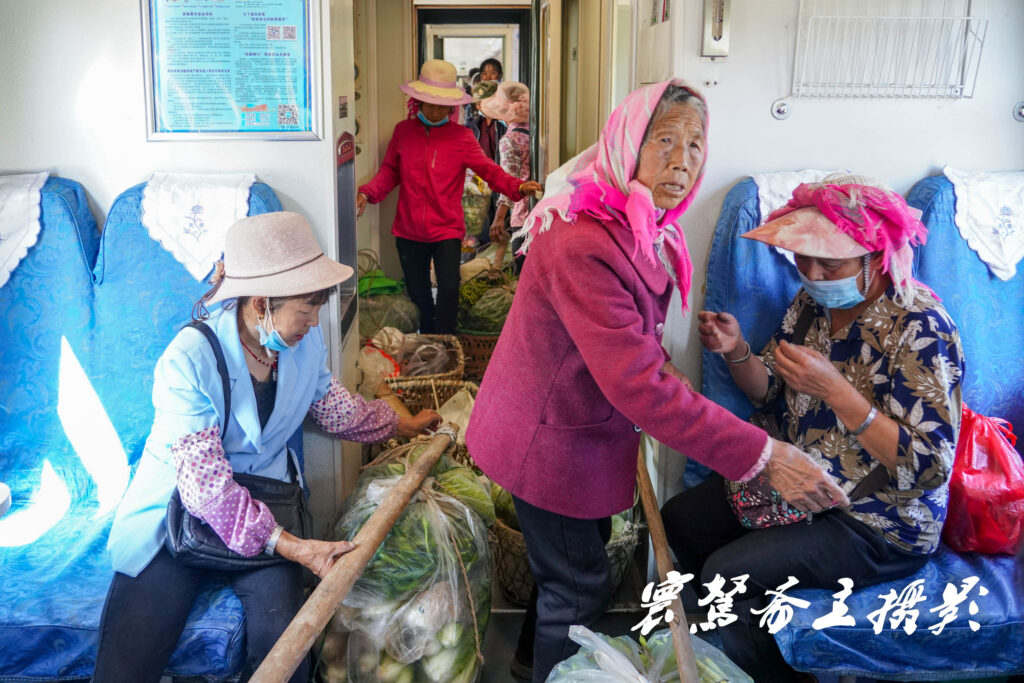
Wu sagte: „Durch die langsamen Züge konnte ich die Reichweite meiner Erdbeeren erhöhen. Der Jahresumsatz hat 600.000 Yuan RMB überschritten und die Erdbeer-Anbaufläche von heute ist viermal so groß wie im Jahr 2015.“
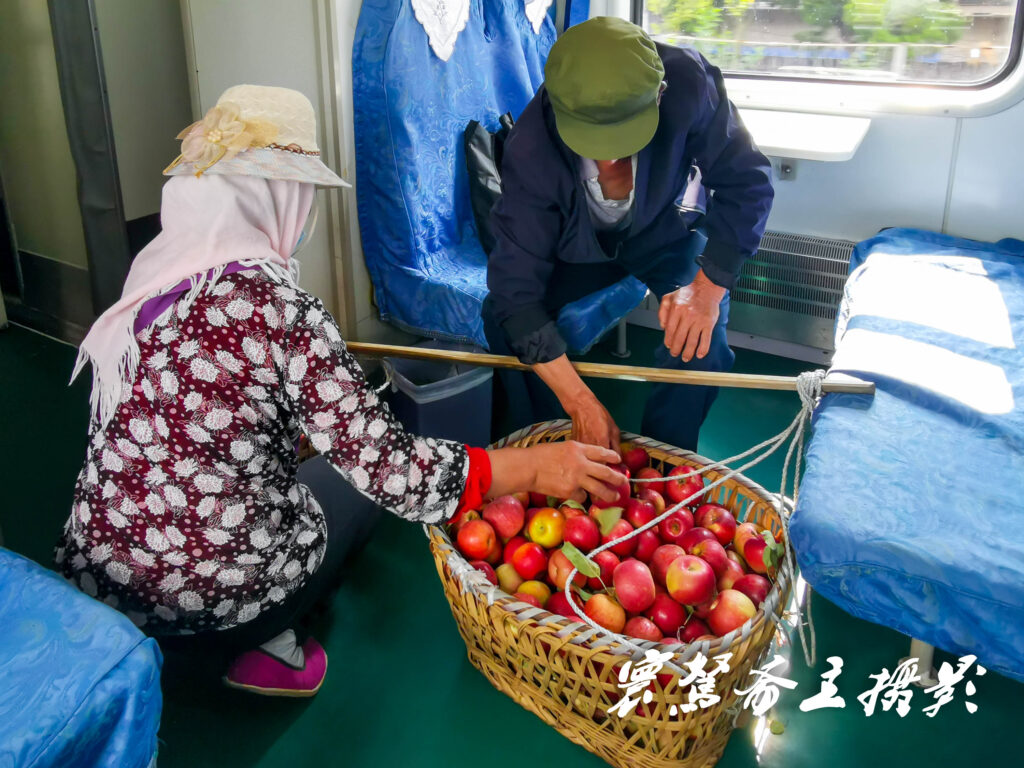
Die 34-jährige Hühnerzüchterin Pan Xiao aus dem Dorf Ganba stieg mit ein paar Körben mit ökologisch gehaltenen Hühnern und Hühnereiern in einen anderen Wagen ein, die sie auf dem Markt für Agrarprodukte in der Stadt Kaili verkaufen wollte. Pan kehrte 2012 zur Existenzgründung in ihr Heimatdorf Ganba zurück. Dank einer Reihe von Vergünstigungsmaßnahmen der lokalen Verwaltung hat sie sich als Züchterin für ökologisch gehaltene Hühner einen Namen gemacht.
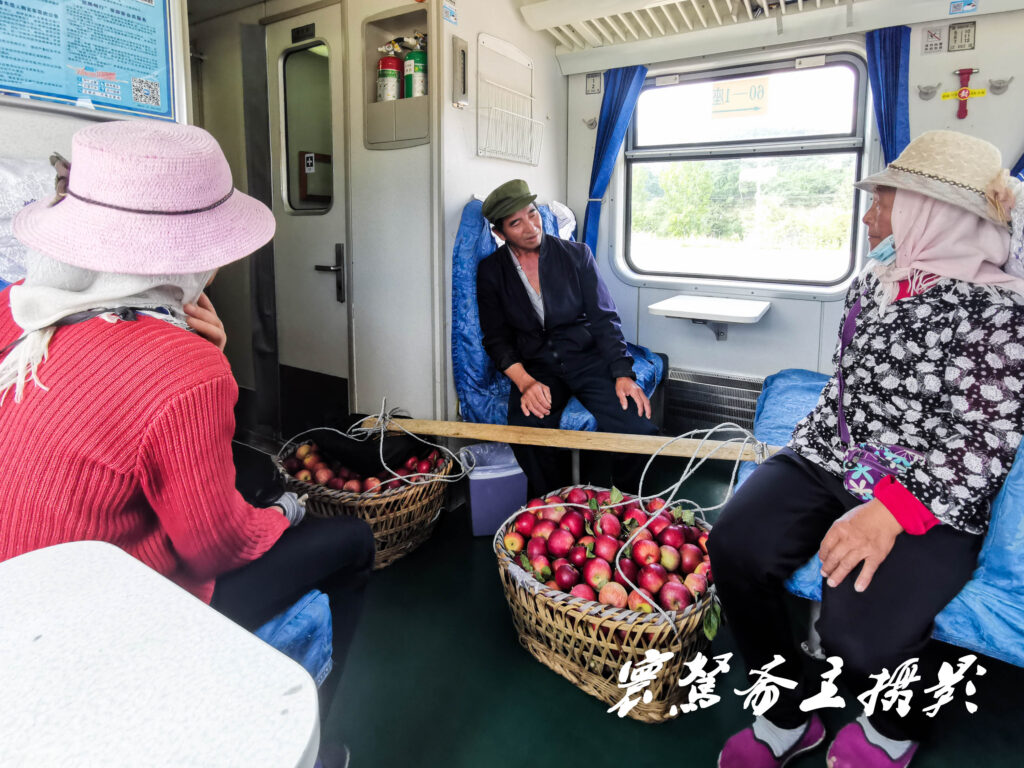
Pan erklärte: „Jeden Tag suchen wir über 100 Hühner aus, um sie auf dem Markt zu verkaufen. Innerhalb von ein paar Stunden können sie dann alle verkauft werden. Es dauert zwar länger, bis die ökologisch gehaltenen Hühner schlachtreif sind, aufgrund der hohen Qualität braucht man sich aber keine Sorge um den Absatz zu machen.“
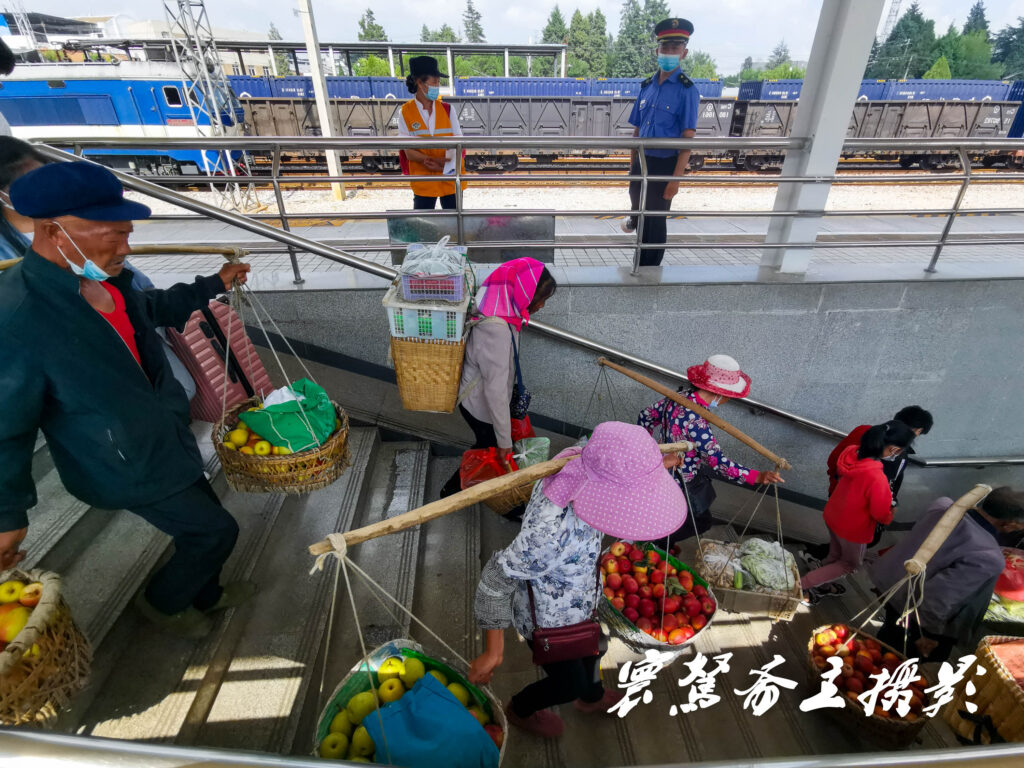
Hu Guichuan arbeitet seit 28 Jahren als Zugführer der langsamen Züge 5633 und 5634. Er trägt nicht nur die Verantwortung für die Sicherheit der Züge, sondern hilft auch den Bauernhändlern, ihre landwirtschaftlichen Produkte zu verkaufen und den Absatz zu erhöhen.
(Quelle: CRI Deutsch, VCG, Sohu)
Im Jahr 2023 hat die Wirtschaft Chinas eine positive Erholung erlebt, wobei Angebot und Nachfrage stetig verbessert wurden. Die aktive Förderung von Strukturwandel und Erneuerungen schritt voran, die Beschäftigung war stabil, die Preise waren insgesamt im Griff, die soziale Absicherung war effektiv und die hochwertige Entwicklung wurde solide vorangetrieben. Die wichtigsten erwarteten Ziele wurden erfolgreich erreicht.

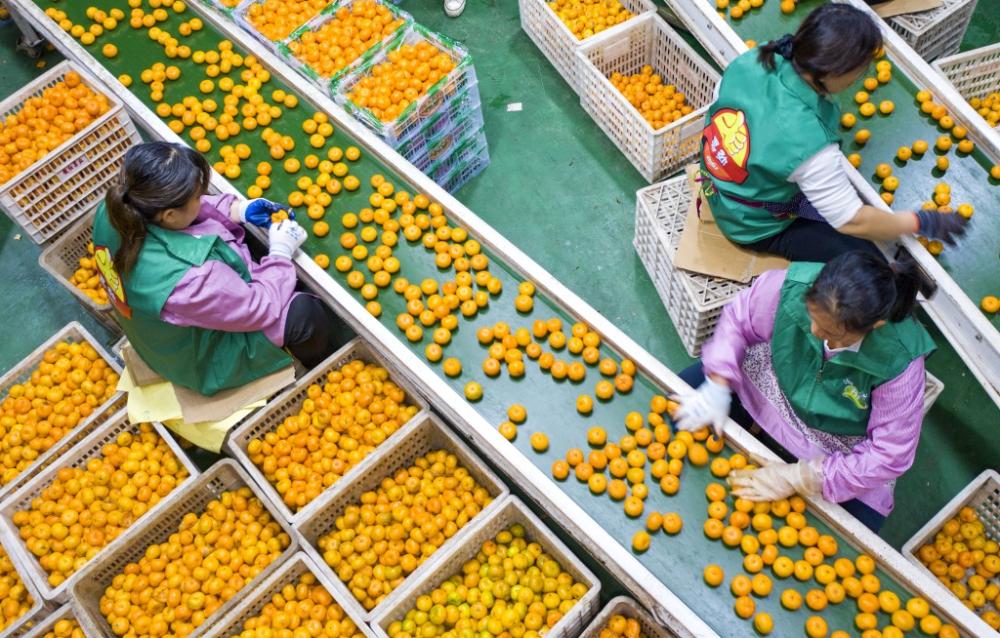

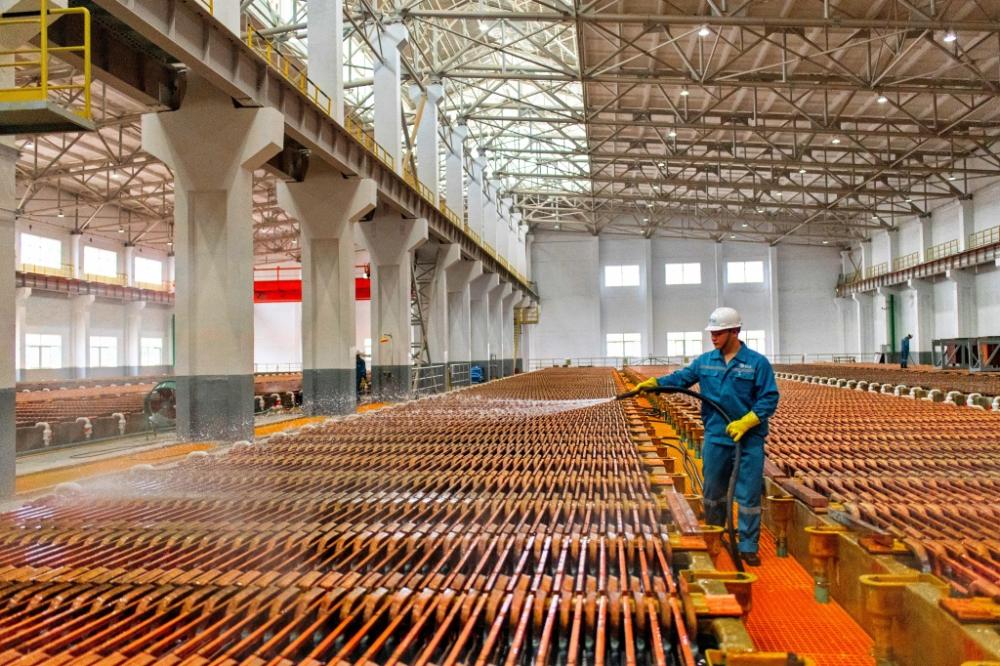

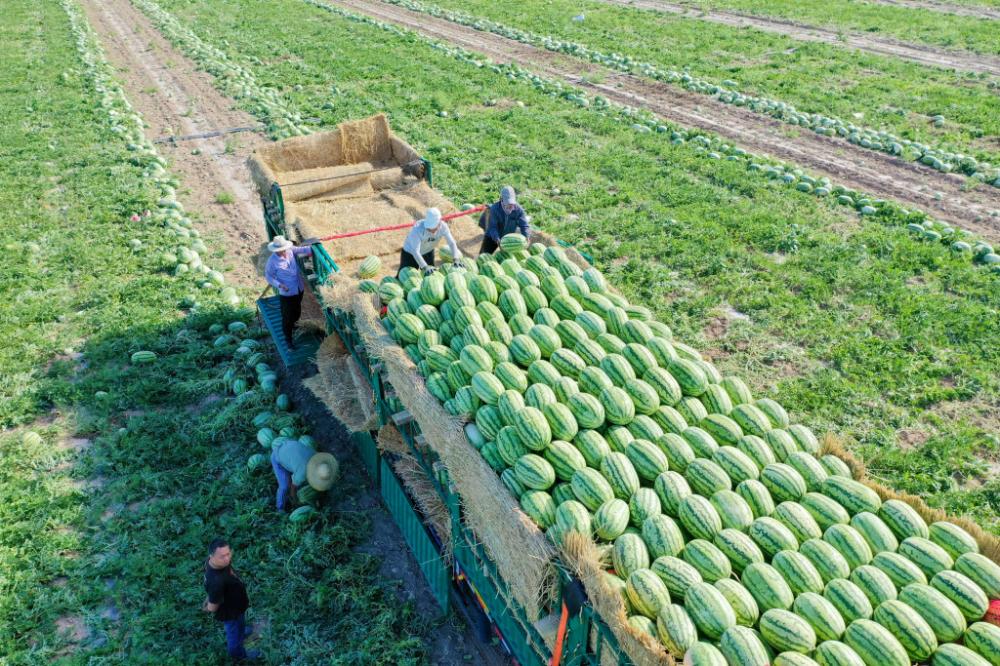
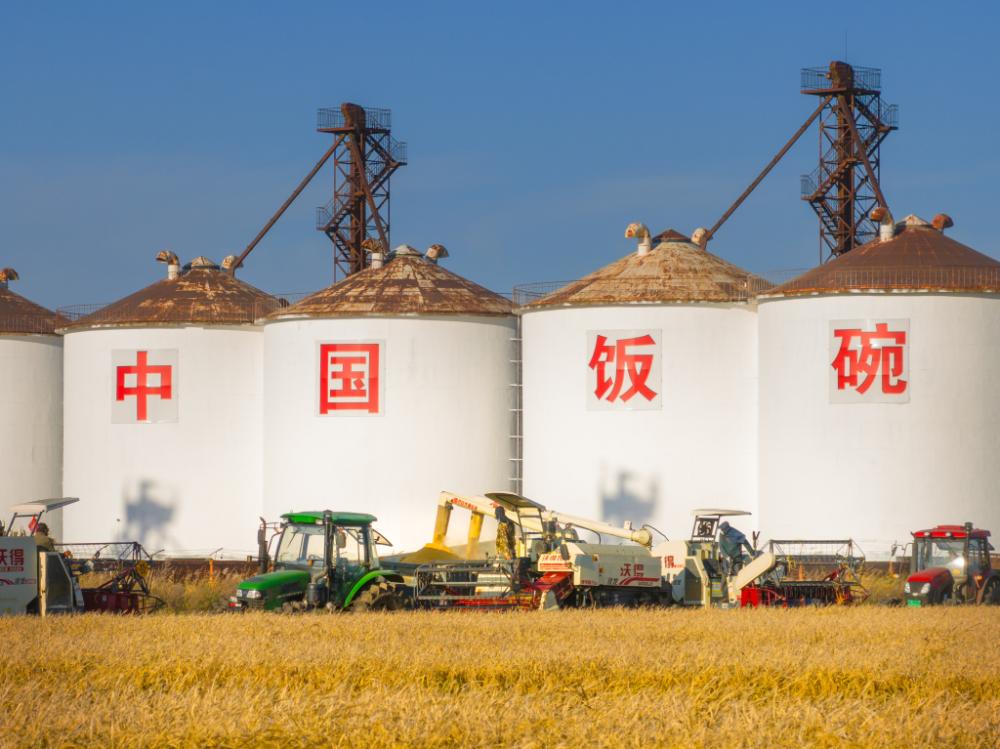


(Quelle: CRI Deutsch, VCG)